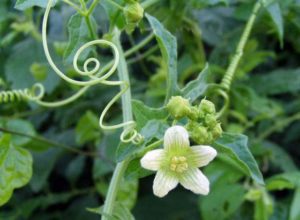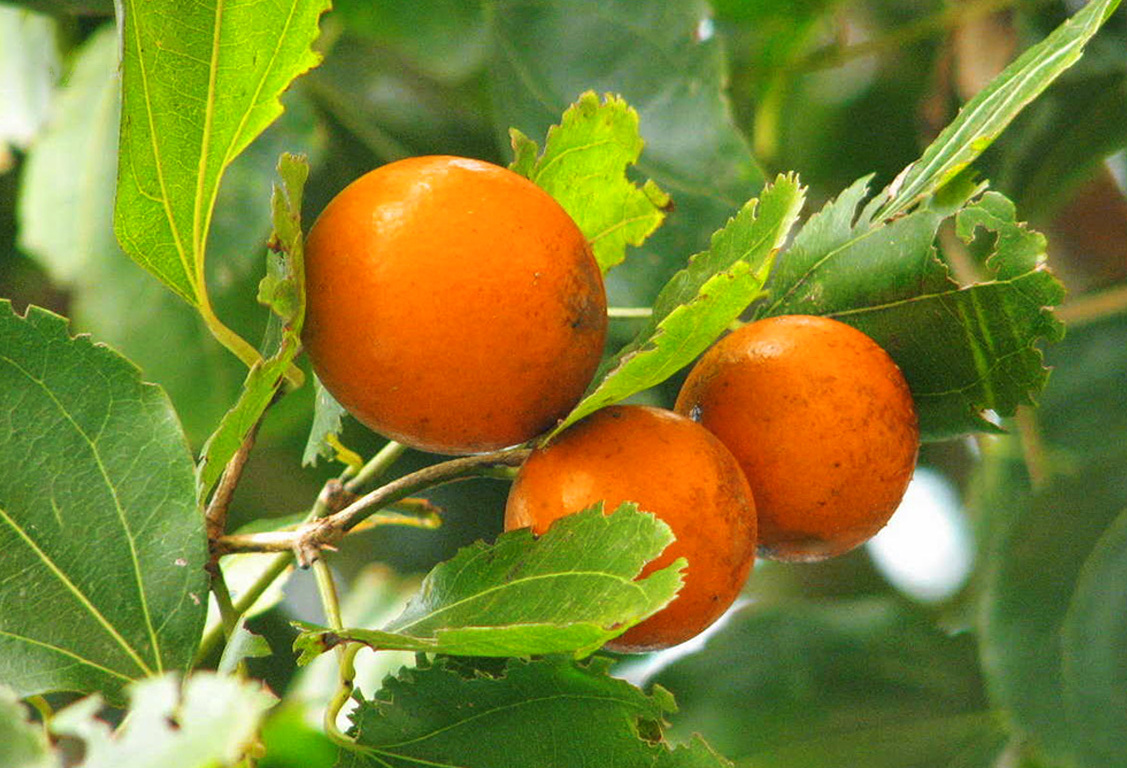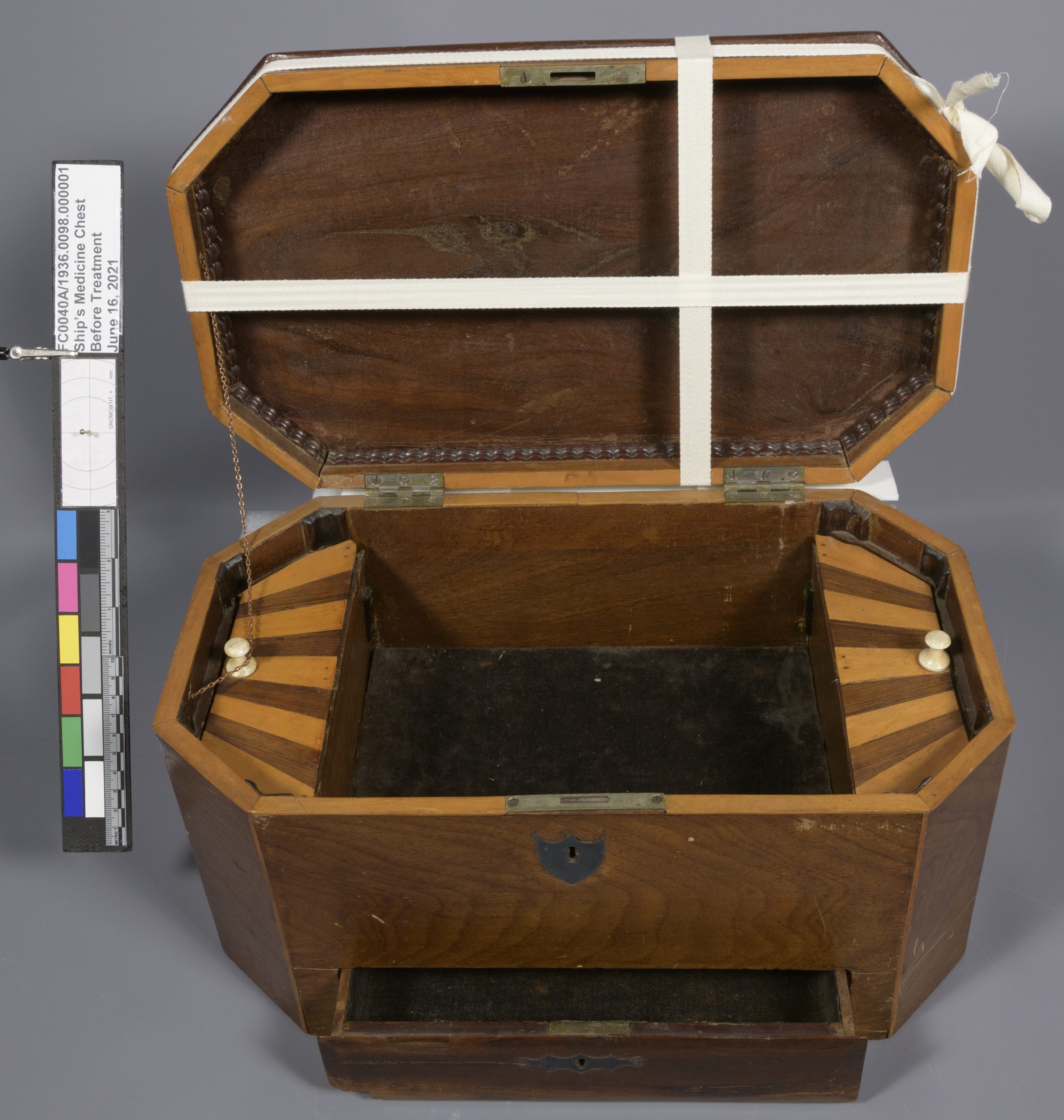
Last month, The Mariners’ Museum and Park welcomed me “aboard” for an 8-week Graduate Fellow Internship in Conservation. During this summer, I am working with the Conservation Department under Object Conservator Paige Schmidt. I’m coming to The Mariners’ Museum from Buffalo, New York, where I’m studying Art Conservation at SUNY Buffalo State College, majoring in Objects Conservation. During my time at the Museum, my primary project will be the treatment and analysis of a Ship’s Medical Chest from c.1860 (image 1). The results of analysis will be used to inform safe handling and storage of the chest. The Museum has almost a dozen medical chests, which were once used by ship physicians to hold their medical tools, books, and “medicines.” This chest houses 9 glass vials, 6 of which contain substances that may have been used as medicines in the 19th century (image 2).
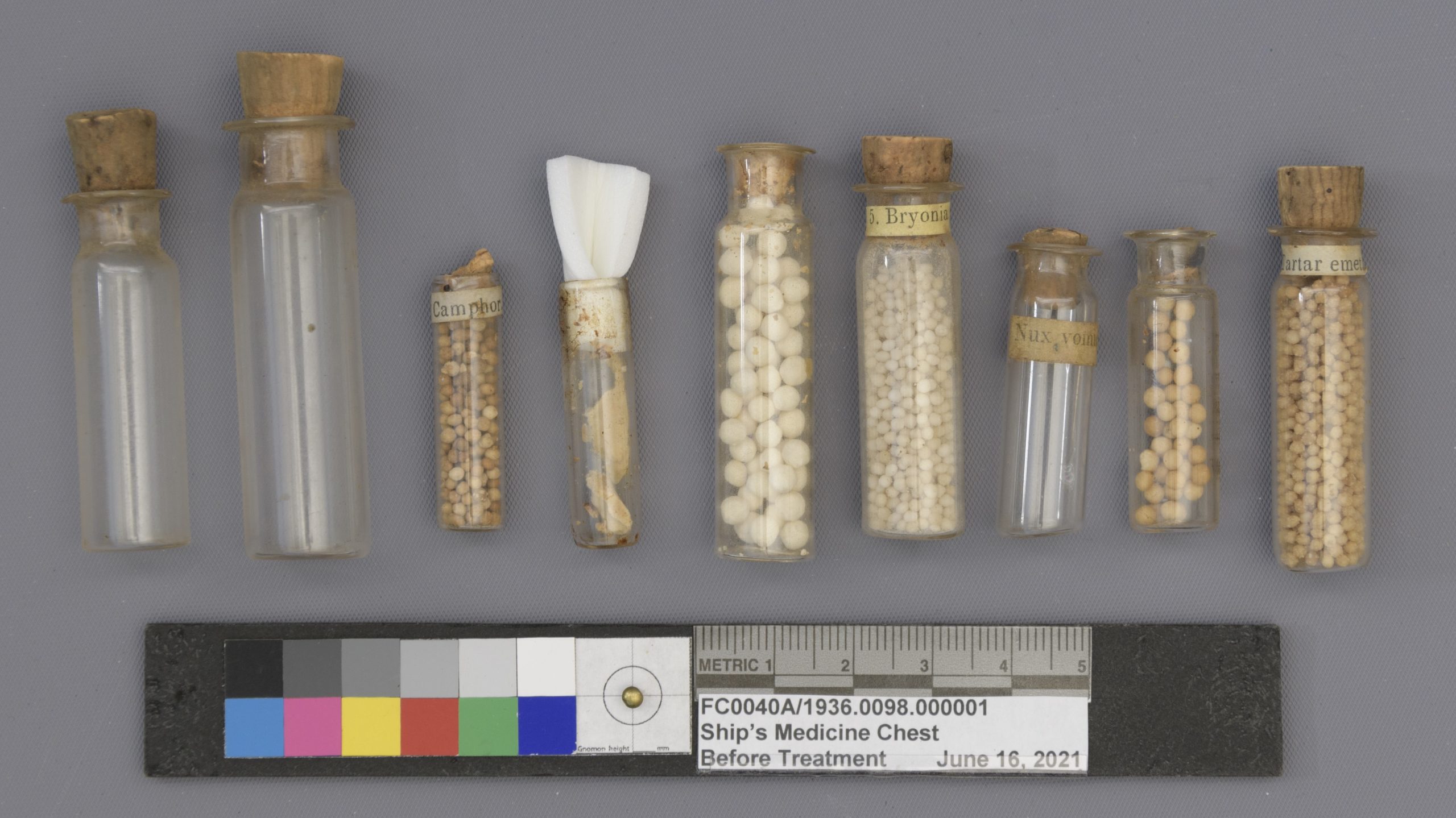
Our suspected substances
Finding unknown medical substances in a museum collection can be concerning, as many early medicines are now known to be hazardous. Some of the vials were labeled, “Camphor,” “Bryonia,” “Nux Vomica,” and “Tartar emet,” (although the Nux Vomica vial was empty). Camphor is a common ingredient in topically-applied medicines like anti-irritants and vapor rubs, but high dermal exposures and ingestion can be toxic.
“Bryonia” likely refers to the plant species bryonia alba or bryonia dioica, which belong to a family of herbaceous vines commonly called “snakeweed” or “devil’s turnip” (image 3). Bryonia was prescribed for numerous maladies including parasitic worms, “dropsy,” chronic inflammations, glandular enlargements, scarlet fever, constipation, etc. Exposure of fresh or dried bryonia root to the skin can also cause irritation and blistering. Ingestion of bryonia can lead to vomiting, diarrhea, vertigo, decreased pulse, coma, and death.
“Nux Viomica” refers to the tree species, strychnos nux-vomica, also known as the “Strychnine tree” (image 4). As its name suggests, nuts of the strychnos nux-vomica tree contain strychnine, a very toxic poison which can cause muscle contractions and neurological symptoms, convulsions, and death upon ingestion. The nut of the Strychnine tree was once used as a treatment for erectile dysfunction, swelling of the stomach, constipation, anxiety, migraine, etc. It was also used as a poison to apply to arrow tips for hunting.
Finally, “tartar emet” likely refers to “tartar emetic,” also known as antimony potassium tartrate. The term “emetic” indicates that this substance was used to induce vomiting. It was also used to treat parasitic worms and fungal infections. While it may be effective at killing biological infections, tartar emetic is also very hazardous to the host. As a compound of the toxic heavy metal antimony, exposure to tartar emetic can lead to antimony poisoning. Symptoms of toxic antimony exposure include vomiting, diarrhea, hypothermia, and death.
Analysis of the “medicines”
Overall, it was possible that the medical chest contained several very toxic materials. And further, there were three unlabeled vials containing completely unknown substances. Given the potential hazards described above, the presence of the unknowns was not comforting. The conservation department responded by developing a strict protocol for handling the vials involving engineering controls, personal protective equipment (PPE), and storage protocols to minimize risk of exposure. In early June, Conservation Scientist Molly McGath and Objects Conservator Paige Schmidt subsampled the containers and performed X-ray Fluorescence Spectroscopy (XRF) on samples of the “medicines” to identify the presence of heavy metals (image 5).
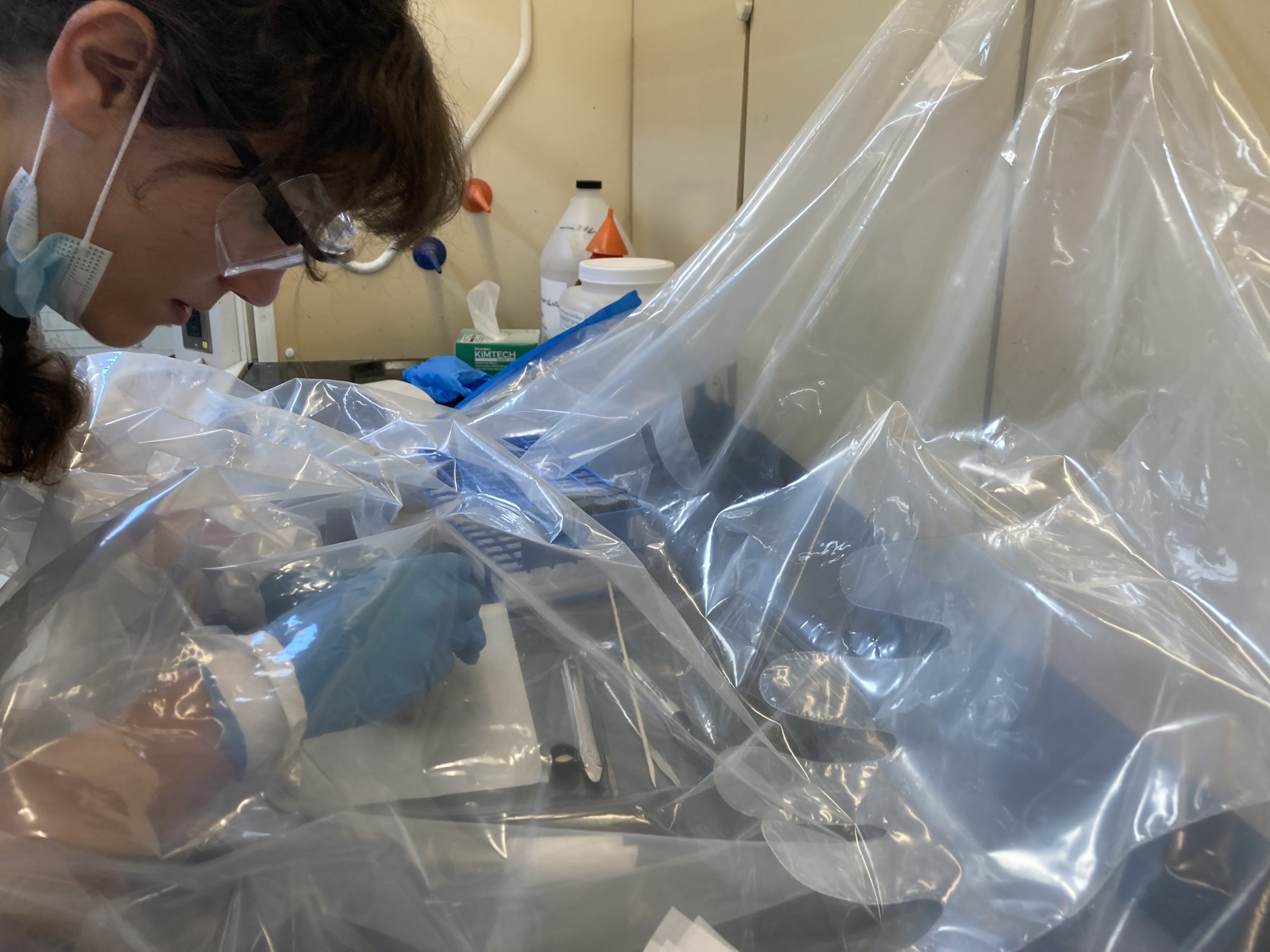
However, no heavy metals were detected in any of the samples. This was unexpected because the medicine labeled “tartar emet” was thought to contain antimony, which should have been detected by the analysis. To shed more light on this mystery, I worked with Molly McGath to perform Attenuated Total Reflectance-Fourier Transform Infrared Spectroscopy (ATR-FTIR) on the samples, which would help to identify the compounds present (image 6). One by one, we analyzed the samples, and each result came back as… sugar! And no poisonous compounds were observed.
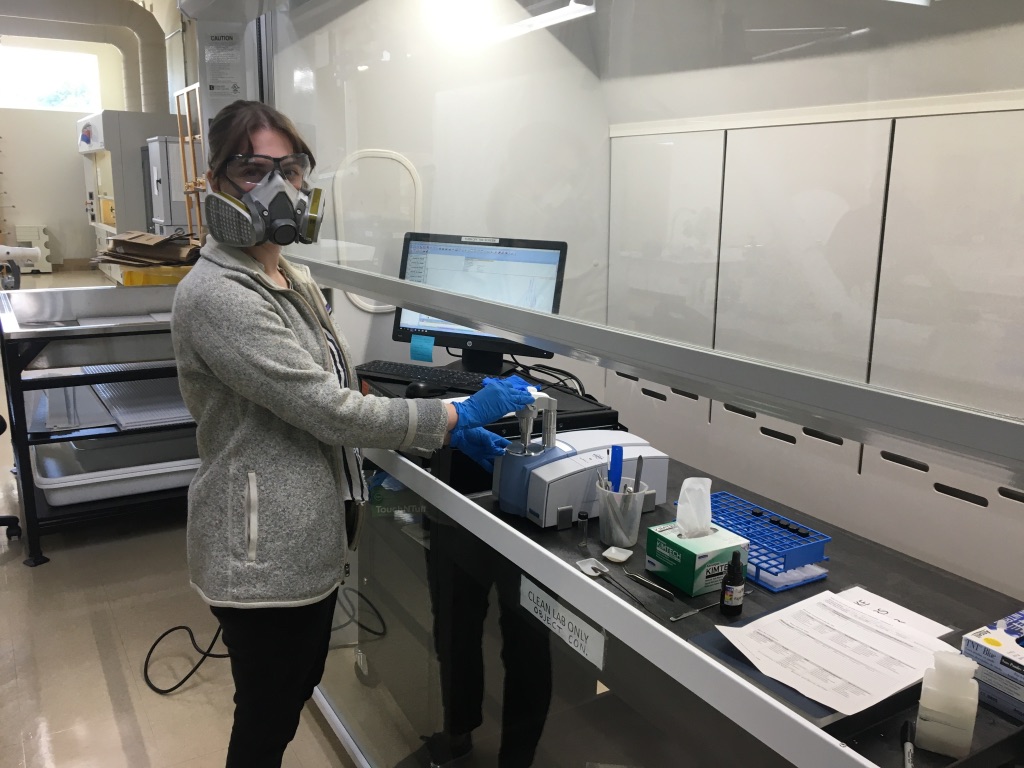
While this was a surprising development, it is certainly good news from a risk-exposure standpoint. Moving forward, handling, treatment, and storage of the object will be significantly less complicated with respect to the “medicines.” However, during additional XRF analysis, Molly McGath discovered lead on multiple surfaces of the chest, especially in its bottom drawer. Based on the contents of the Museum’s other medical chests and available literature, lead appears to be a common compound included in 19th Century pharmaceutical kits. As such, the discovery of lead is not surprising, but does necessitate additional precautions and cleaning of the object.
Stay tuned…
The discovery of the sugar pills raises several questions. Are the pills original to the chest? Did its physician prescribe these “medicines” as placebos? Are these early homeopathic pills? We may never know the answers to these questions. However, this chest undoubtedly holds more mysteries to be uncovered in this project. To confirm the absence of poisons under the detectable limits of the ATR-FTIR, further analysis will be performed in the next few weeks at the William & Mary Applied Research Center (ARC). You can follow along with the treatment of this Ship’s Medical Chest in future blog posts, or come see it in person in the visible conservation lab at the Museum until August, 2021.
References
“Camphor: Uses and Risks” WebMD, 20 Jan 2020, https://www.webmd.com/vitamins-and-supplements/camphor-uses-amd-risks.
Clarke, John Henry. Materia Medica. International Academy of Homeopathy, https://www.vithoulkas.com/learning-tools/books-gv/materia-medica-volume-5/bryonia.
“Nux-Vomica” WebMD https://www.webmd.com/vitamins/ai/ingredientmono-58/nux-vomica.
Queensland Health. “Drugs and Poisons Fact Sheet: Strychnine Permits – What you need to know” Factsheet. Version 1. December 1, 2011. https://web.archive.org/web/20131113224852/http://www.health.qld.gov.au/ph/documents/ehu/strychnine-what.pdf
Haller, John S., Jr. “The Use and Abuse of Tartar Emetic in the 19th-Century Materia Medica.”Bulletin of the History of Medicine, vol. 49, no. 2, Summer 1975, pp. 235-57.
Image Credit
Image 3. Bryonia albans – https://www.homeopathicremediesblog.com/remedies/bryonia/
Image 4. Nux vomica – https://generalhealthmagazine.com/2018/01/02/nux-vomica-herbal-remedy-dangers-precautions/
